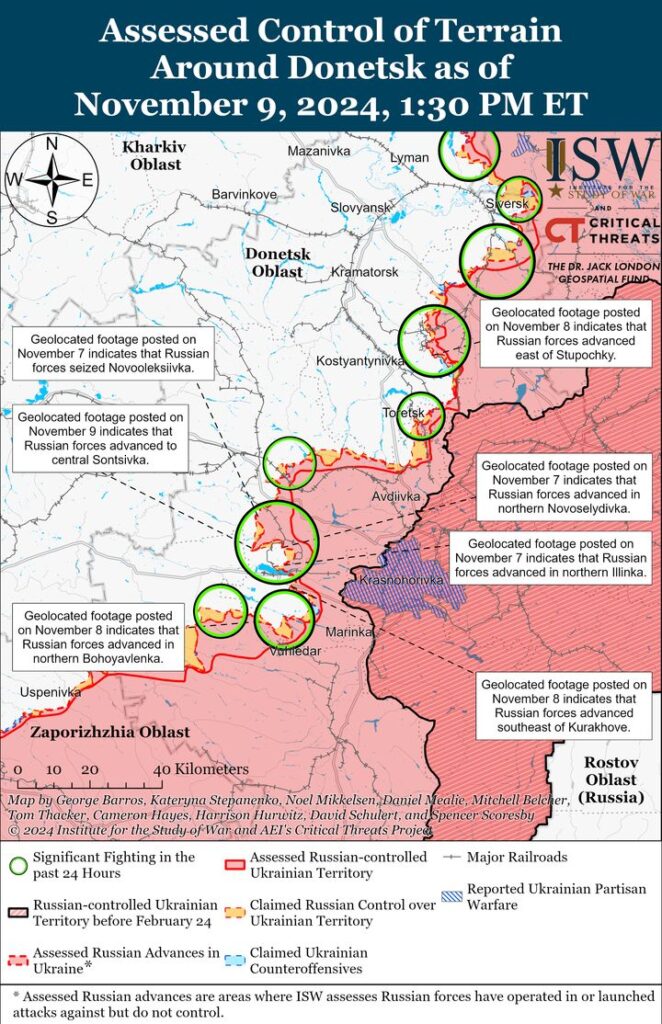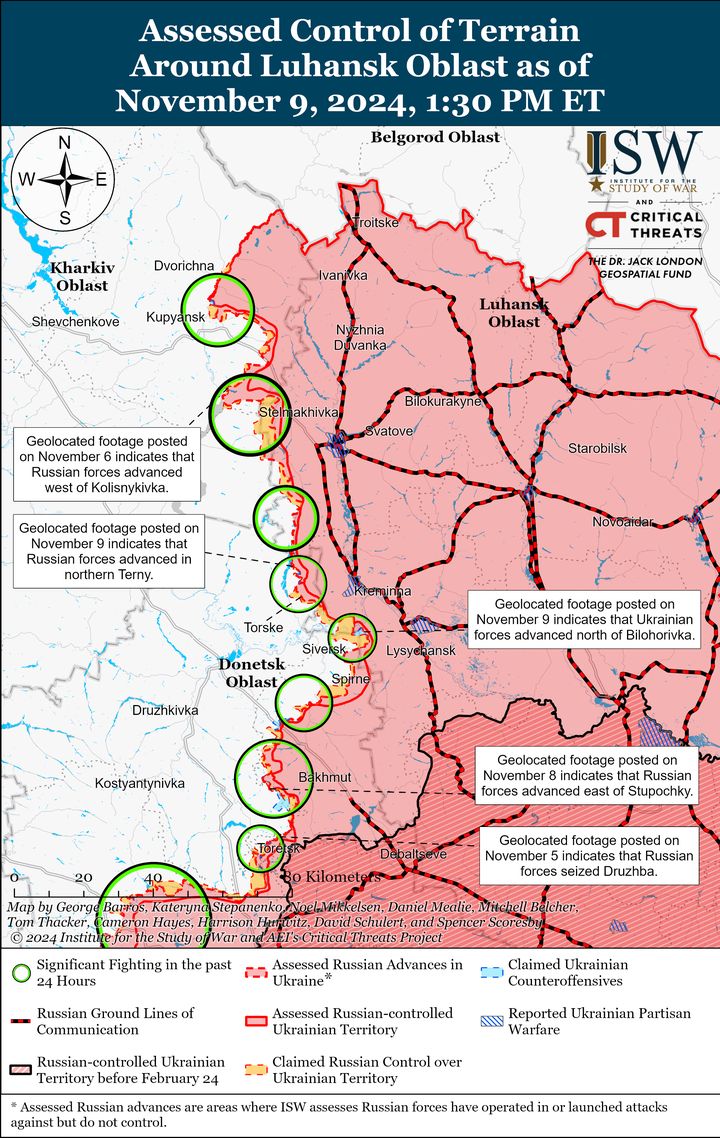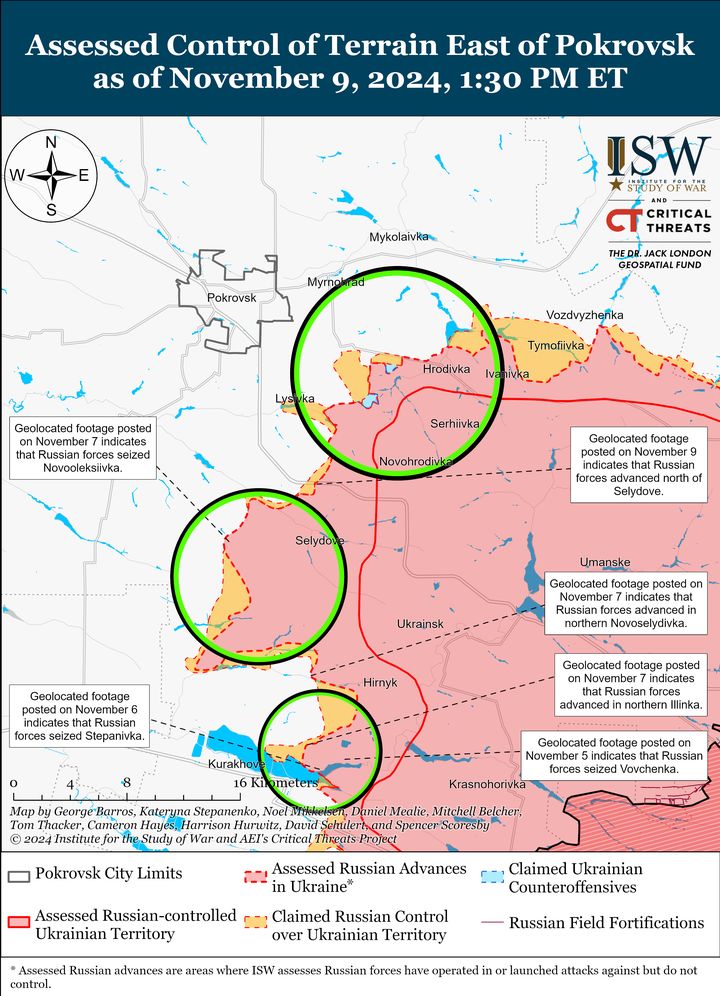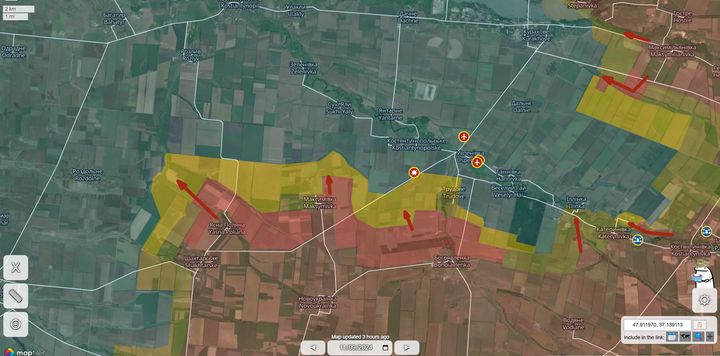ISW: Significant Russian gains come with unsustainable costs, irreparable losses
Russian forces claim 1500 sq km advance, as they suffer the highest losses of the war: 1,345 daily casualties, 200 tanks, 650 armored vehicles through October.


The Russian offensive made significant advances near Pokrovsk, Kurakhove, and Vuhledar (Donetsk Oblast), while making less significant advances in Kupiansk (Kharkiv Oblast) on 10 November. These gains come at an unsustainable cost, reaching a record daily average of 1,345 casualties for Russian forces, according to the US-based public policy organization Institute for Study of War.
The ISW notes that Russia’s dwindling stocks of Soviet-era artillery, tanks, and armored vehicles remain a significant strategic hurdle, especially to Russian operational goals of capturing the remaining portions of Luhansk and Donetsk Oblasts. Russia’s losses in manpower will be impossible to replace on a one-for-one basis without another mobilization. This would further strain an already stretched Russian workforce, which has many industries reliant on migrant workers and other demographics targeted by Russian military mobilization.

Russian forces use “disproportionate forces and means” to make incremental advances with horrendous losses in men and equipment, according to a Ukrainian brigade commander operating in the Kupiansk direction. ISW reports despite suffering heavy casualties, Russian forces still managed to advance near the city of Kupiansk in the settlements of Kucherivka and Krulhiakivka, with the operational goal of pushing Ukrainian forces from the east (Ieft) bank of the Oskil River.

On the other hand, Ukrainian forces recaptured a stronghold and several positions in Novohrodivka, while Russian forces countered with headfirst assaults up the E-50 highway and the southernmost railway connecting Pokrovsk to Donetsk city. The ISW reports that Russians forces suffered enough vehicle losses in Pokrovsk Raion since 2023 to field five full divisions – a sum larger than many of the world’s armies.
The most significant Russian advances come to the south of Kurakhove, where Russian forces are pushing from Vuhledar toward a vital logistic route that connects the Kurakhove salient to the rest of the Ukrainian defensive line. If Russians continue to advance in this direction, it will create an even more difficult defensive situation for Ukrainian forces and may threaten their ability to conduct an orderly withdrawal. The ISW did not report on Russian manpower or vehicle losses for this sector.
The ISW can not confirm Russian milbloggers claim of major advances “up to 4.3 kilometers wide and 1.8 kilometers in depth east of Maksymivka (northwest of Vuhledar) and up to 3.6 kilometers wide and 1.6 kilometers deep east of Bohoyavlenka (northwest of Vuhledar).”

However, open-source investigator and analyst, Andrew Perpetua, who maintains an interactive map of the Russo-Ukrainian war, recorded geolocated evidence of Russian advances toward Rozdolne, Maksymivka, and Trudove in Donetsk Oblast.
Related:
- ISW: Russian president seeks reset with Trump administration on Moscow’s terms
- ISW: Russian advances recorded near Kupiansk, Svatove, Pokrovsk, Kurakhove, and Vuhledar
- ISW: Russian president seeks reset with Trump administration on Moscow’s terms
- ISW: Russians make multiple advances in Kursk, Donetsk while Ukraine regains ground in Kharkiv oblast



